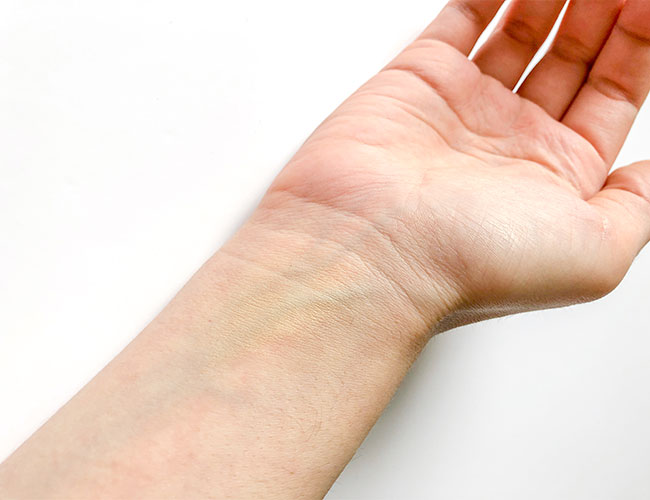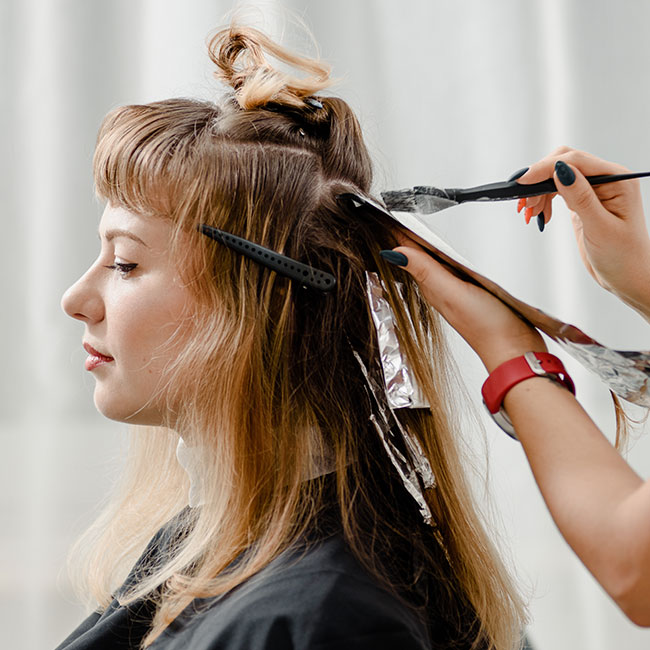
Determine your skin's tones
Jarman and Blakeney both say the first step to finding the best hair color for you is to consider what tones are most prominent in your skin. Jarman explains that this is important to note because the key to finding a flattering hair color is to create a balance of both cool and warm tones.
When it comes to skin tones, Blakeney says that "the majority of people are classified as warm, cool, or neutral." If you're unsure of which category you fall into, there are a few ways to figure it out.
One great place to start is to examine the color of the veins in your wrists. "You're cool-toned if your veins are blue or purple. You are warm if they are green," Blakeney says. That seems simple enough!
If you're still unsure, though, Jarman offers another trick, which involves breaking out some aluminum foil. "Stand directly under a light in front of a mirror and hold a piece of aluminum foil," she instructs. "Then replace it with gold foil and determine which is more flattering on you as it reflects back up on your skin." She says if the aluminum foil is more flattering, it's likely that you have cool skin tones, while those who look better in gold have warmer skin tones.
Compare skin tones to eye color
Once you've nailed down your skin's tones, the next factor to consider is your eye color. This step should be a no-brainer—as long as you know what color your eyes are, all you have to do is determine whether it's a cool or warm color!
"Blues, greens, and grays are all cool; browns, hazels and ambers are all warm," Jarman notes.
After determining which category your own irises fall into, all that's left is to use that in conjunction with your skin's tones to decide whether your hair color should veer warm or cool. Jarman says the key is to use a 2:1 formula: "Either 2 cools and 1 warm or 2 warms and 1 cool," she explains. That means if your skin tone and eye color are both cool, adding some warmth in your hair is likely the best option; likewise, if you have a warm skin tone and warm eye color, go with a cooler hair shade. And Jarman says those with mismatched tones in their eyes and skin are in luck: "You can wear any tone in your hair!"
Blakeney offers similar advice for choosing a flattering shade based on your skin tone. For those with porcelain complexions, she says "cool blonde colors look fantastic because the chilly tones help to balance out the redness." If you happen to have fairer skin with cool undertones, she suggests opting for "warm tones like strawberry blondes, copper, honey, and gold."
On the other hand, if you're dealing with a lot of warmer tones in your skin and eyes, Blakeney warns against hair colors with a lot of yellow, and suggests choosing cooler hair shades instead. "Warm peachy complexions will see their skin pop with colder, auburn reds," she notes.
If you're really unsure about which direction to go, you can't go wrong by utilizing a mixture of tones in your hair color. According to Jarman, "a balance of cool and warm tones in your hair, or neutral, can work on any combination of skin tone and eye color."
At the end of the day, the best hair color for you will mostly come down to personal preference. Luckily, you have a lot of options to choose from no matter what tone your skin has or what color your eyes are—in fact, your hair can be as dark or as light as your heart desires and still remain flattering, as long as you work to create a balance between all of the tones. "Anywhere on the light to dark spectrum of color can be flattering as long as you have the right balance," Jarman concludes.


